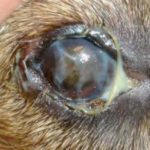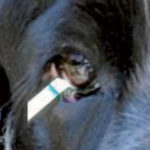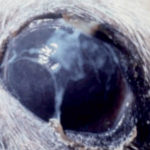KCS (keratoconjunctivitis sicca) is a disease of the tear-secreting glands that results in reduction or lack of tear production. The superficial layers of the eye – including the cornea and conjunctiva – as well as the eyelid depend on tears for nutrition and protection.
Without tears the eyes are highly susceptible to disease and trauma. What are the symptoms of keratoconjunctivitis sicca? The clinical signs associated with KCS will depend on the extent and duration of the condition. The symptoms include:Conjunctivitis – reddening and swelling of the conjunctiva •
- Squinting or blinking excessively
- A thick yellow or mucoid discharge from the eye
- Prominent third eyelid
- Ulceration or cloudiness of the cornea
- Secondary bacterial infections
- Impaired vision
How do veterinarians diagnose dry eye?
Keratoconjunctivitis sicca is most commonly confused with bacterial conjunctivitis. It is important that a veterinarian performs a thorough ocular examination when either disease is suspected. KCS can be diagnosed by a very simple test: the Schirmer tear test. The tear test involves sticking small strips of absorbent paper on the inside of the eyelid. The strips absorb tears and indicate the level of tear production present in the eye. If there are inadequate levels of tears present in the eyes, then KCS is confirmed.
How should we as groomers care for a dog with KCS?
Because KCS frequently causes corneal ulceration, we as Groomers need to bathe the eyes with wet cotton wool to thoroughly clean the eyes of discharge and need to keep the eyes moist throughout the grooming/ drying process. Personally, I will ask the owner to bring the dogs own lubricating ointment and/or artificial tears in with the dog so that we can reapply as and when necessary. Again, when you have trimmed the dog, reapply, as the dog cannot flush the fine cut hairs out of its eyes with its own tears. The dog should be regularly observed for any worsening of signs and a mild shampoo should be used around the eyes.
What happens if the dry eye is not treated?
Dogs that do not have their condition treated will have on-going pain and discomfort. Repeated eye infections and irritation to the cornea can cause severe damage. Ulceration and scarring of the cornea can eventually lead to blindness. The longterm prognosis for vision is greatly improved if the disease is diagnosed in the early stages. Prompt treatment is crucial to arrest the disease’s progress and effect the best outcome. Left untreated scarring (blackening) of the cornea causes blindness.



